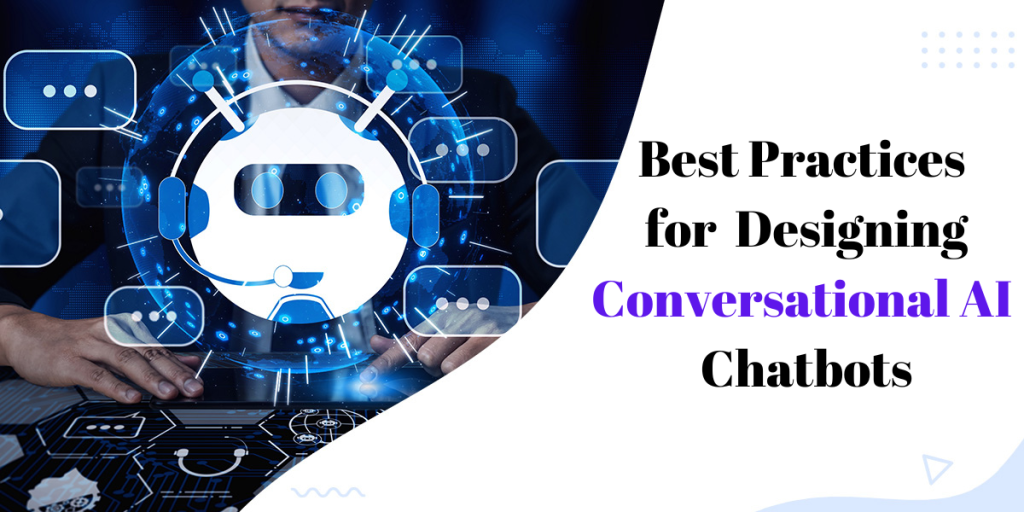In today’s fast-paced digital landscape, businesses face a common challenge – the need to connect with customers on a personal level while managing ever-increasing demands for real-time assistance.
Traditional customer support methods are often slow and cumbersome, leaving customers frustrated and businesses struggling to meet their needs efficiently. The solution to this dilemma lies in harnessing the power of Conversational AI, but not all chatbots are created equal.
In this article, we will explore the best practices for designing Conversational AI chatbots, focusing on creating custom AI chatbots that can truly engage users, streamline processes, and enhance customer satisfaction. With the right approach, your business can not only solve the problem of disconnected customer interactions but also stand out in the digital landscape.
Before delving into the best practices, it’s essential to have a clear understanding of what Conversational AI is. Conversational AI refers to the technology that enables computers to engage in human-like conversations with users. These AI chatbots are designed to understand natural language, interpret user intent, and provide relevant responses. They can be integrated into websites, mobile apps, messaging platforms, and more, making them versatile tools for interacting with customers.
Best Practices for Designing Conversational AI Chatbots
1. Define Clear Objectives
Begin the design process by setting clear objectives for your custom AI chatbot. What do you want to achieve with the chatbot? Whether it’s improving customer support, increasing sales, or automating routine tasks, having well-defined goals will guide the development and implementation of your Conversational AI.
2. Understand Your Audience
To create a chatbot that resonates with users, you must understand your target audience. Develop user personas to identify the specific needs, preferences, and pain points of your customers. Tailoring the chatbot’s interactions to meet these needs will result in a more engaging and effective conversation.
3. Design a Conversational Flow
A well-structured conversational flow is the backbone of an effective AI chatbot. Design a conversation map that outlines how the chatbot will engage with users. Start with a greeting, guide users through their requests, and conclude the conversation appropriately. Ensure that the chatbot can handle various user inputs, such as questions, commands, or statements.
4. Natural Language Processing (NLP)
Implement robust Natural Language Processing (NLP) capabilities in your custom AI chatbot. NLP allows the chatbot to understand the context of a conversation, interpret user intents, and respond in a more human-like manner. High-quality NLP models are essential for delivering accurate and relevant responses.
5. Personalization
Personalization is key to creating a memorable user experience. Customize your chatbot’s responses based on user data, such as their name, preferences, and past interactions. A personalized approach helps build rapport and enhances the feeling of a one-on-one conversation.
6. Multilingual Support
In an increasingly globalized world, providing multilingual support is crucial. Ensure your Conversational AI chatbot can communicate in multiple languages to reach a broader audience. This feature can be especially beneficial for businesses with an international presence.
7. Integration with Existing Systems
Integrate your chatbot with existing systems and databases to provide users with real-time information and assistance. For example, a customer service chatbot should have access to product information, order status, and frequently asked questions. Seamless integration enhances the chatbot’s functionality and efficiency.
8. Continuous Learning and Improvement
Conversational AI chatbots should be designed to learn and improve over time. Implement mechanisms for collecting user feedback and monitoring chatbot performance. Use this data to make regular updates, refine responses, and address any shortcomings in the chatbot’s functionality.
9. Human Handoff
There will be situations where the chatbot cannot provide a satisfactory answer or assistance. Implement a smooth transition to human agents when necessary. This ensures that users receive the help they need without frustration, and it also prevents the chatbot from providing incorrect or inappropriate responses.
10. Security and Privacy
Protect user data and privacy. Conversational AI chatbots may handle sensitive information, and it’s crucial to maintain high levels of security. Implement encryption, authentication, and authorization protocols to safeguard user data. Be transparent about data usage and adhere to relevant privacy regulations.
11. Testing and Optimization
Thorough testing is essential to identify and address any issues in the chatbot’s functionality. Test the chatbot’s responses under various scenarios, including different user inputs and intents. Continuously optimize the chatbot’s performance based on user feedback and real-world usage.
12. Scalability
Plan for scalability from the beginning. As your user base grows, your custom AI chatbot should be able to handle increased demand without sacrificing performance. This may involve using cloud-based solutions that can easily adapt to changing requirements.
13. Brand Consistency
Ensure that your chatbot’s personality and tone align with your brand’s voice and values. Consistency in messaging and branding helps users feel a stronger connection with your business.
Conclusion
Conversational AI chatbots are indispensable tools for businesses aiming to enhance customer engagement, optimize operations, and deliver outstanding service. Adhering to the best practices delineated in this article empowers you to craft a custom AI chatbot that ensures exceptional user interactions and aligns with your business objectives. Crucial elements include understanding your audience, integrating Natural Language Processing (NLP), personalizing responses, and continually refining performance. It’s important to recognize that creating an exceptional Conversational AI chatbot is an ongoing endeavor, necessitating vigilance in keeping pace with the latest advancements in AI technology to maintain a competitive edge in the market. Ready to get started? Build your Custom AI Chatbot today!

